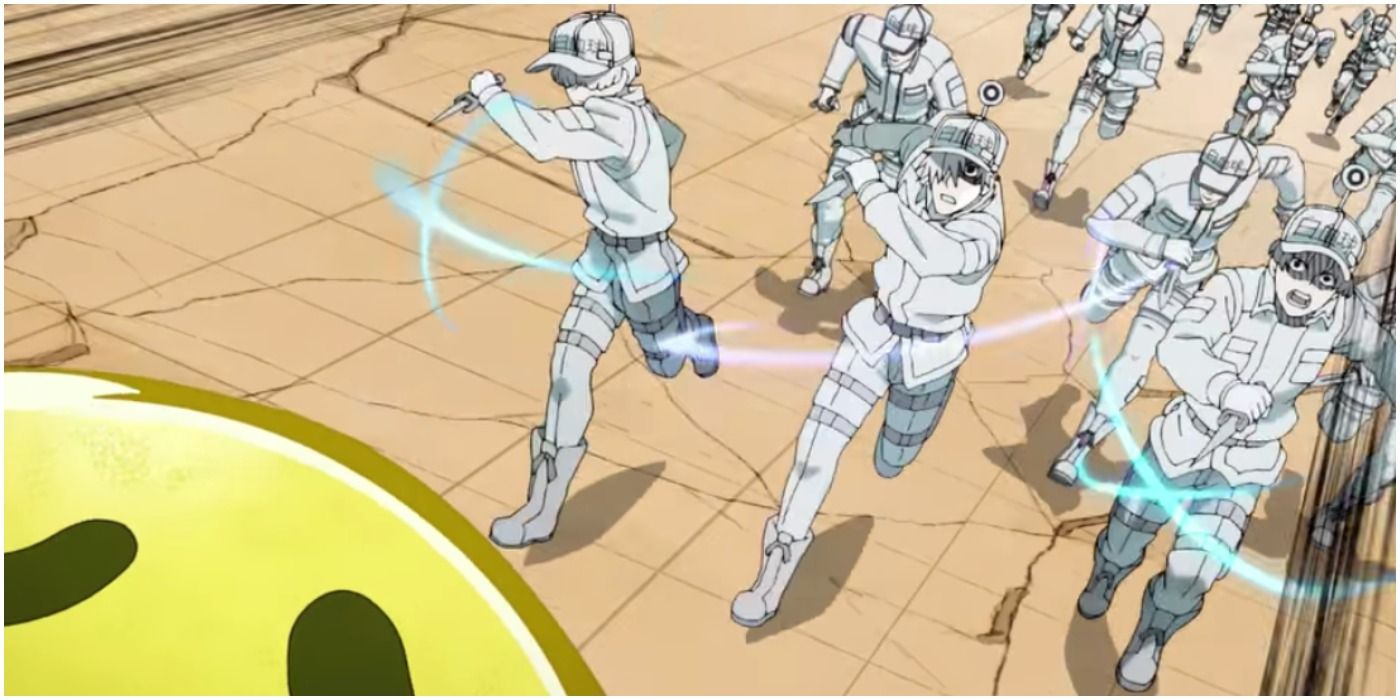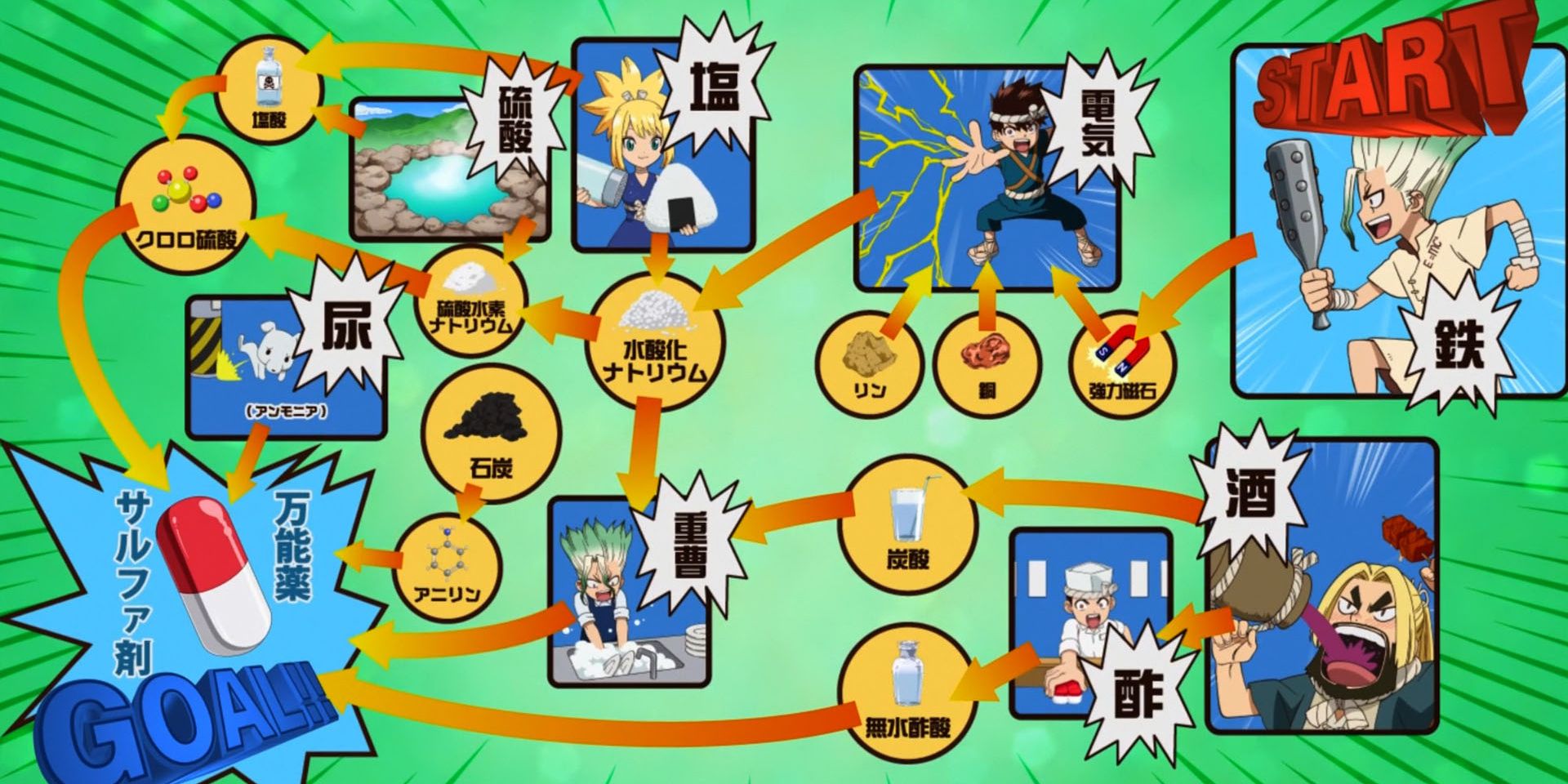Cells at Work! and Dr. Stone are two shows that are fundamentally rooted in science -- or at least, appear to be. While Cells at Work! has been labeled as edutainment (entertainment with the goal of educating), how much can you really learn from these two series? As it turns out... a lot.
Both shows follow real-world science as we currently understand it very closely, and use the unique medium of anime to turn what may be otherwise dry lectures and principals into action-packed stories with unexpected twists and turns. By making the narrative engaging, both shows increase the possibility of the viewer retaining the knowledge beyond the credits, and can easily teach or reinforce scientific principals.
Cells at Work! makes use of anime's stylized character designs to hint at either the cells' actual cellular structure (such as Eisonphil's hat), or showcase a process that wouldn't need explanation (like the fact that the red blood cells' jackets are reversible, denoting whether or not they're oxygenated.) But the effort doesn't stop there -- for individual cells, such as main character Red Blood Cell, they gave her a very distinct hair swoop that actually hints to the fact that she's a malformed sickle cell. Due to their "sickle" shape, sickles cells aren't able to travel the bloodstreams as well as properly formed red blood cells, which is why Red Blood Cell is always getting lost in the show.
Beyond that, Cells at Work! is probably one of the most accurately inaccurate depictions of the human body's inner workings, with both viruses and cells spurting anime blood when injured -- making the white blood cells more often look like serial killers than the body's best defense. While one can question (or laugh) at this stylistic choice, it allows the "fights" to be memorable, making it more likely for people to stop and read the sometimes-long freeze frames explaining the process so that they can further appreciate what's happening onscreen. The show has even been determined as accurate enough that in China, it's been assigned-watching for a high school biology course.
Meanwhile, in Dr. Stone, more hands-on research is necessary. With main character Senku being a scientific marvel, he's perfectly memorized how to travel from the stone age to the current one in terms of scientific advancement -- but now he just has to actually do it, which is easier said than done. Most of what happens is, as Senku would say, ten billion percent going to go over most viewer's heads to start, but the science he uses in his inventions is completely sound -- to the point that the show often has to break the fourth wall to remind viewers not to try this at home.
Adding to the show's authenticity is the amount of failure Senku faces when recreating an invention. While he faces far less than any of us would, in reality, the scientific method exists for a reason, and trial-and-error is sometimes the only way to create progress. This actually assists the show both narratively and educationally, as it humanizes the characters while simultaneously giving Senku an excuse to explain what went wrong in addition to what they're trying to do. Whether it's simply super-heating fire with air in order to melt iron sand into proper iron, using the pinhole effect to explain why Suika's mask helps her to see (even before they add corrective lenses,) or creating activated-charcoal gas masks to filter out poisonous gas so they can obtain sulfuric acid, Dr. Stone is spot on with its use of the scientific method, processes and safety protocols.
And come now, which Dr. Stone fan hasn't gone out to try to make Senku Cola after Mecha-Senku gave express permission for us to do so?! Don't worry, most of our attempts weren't that good either...
Surprisingly enough, both shows have actually shared a common enemy! And no, we're not talking about the most epic science crossover ever (though we would love to see it). It's streptococcus pneumoniae, otherwise known as the infection from Season 1, Episode 1 of Cells at Work! "Pneumococcus" and the disease Senku diagnoses in Ruri in Season 1, Episode 15, "The Culmination of Two Million Years." While White Blood Cell was able to deal with the infection promptly in Cells at Work!, Dr. Stone's second arc revolved around creating the materials necessary to create sulfanilamide, medicine that just so happens to "absolutely destroy pneumococcus bacteria," to quote Senku. For both bodies, it's a happy ending and a full recovery.
Both shows have also gotten some pretty high unofficial praise, ranging from a trend of "Real Life Doctor Watches Cells at Work!" videos that further explain the processes shown, to the sheer effort the animators went to in Dr. Stone's Episode EX "Behind the Scenes of Dr. STONE," actually going to a glass-blowing facility and crushing shells so as to push those scenes beyond the limits of imagination and as close to realism as possible.
All in all, if you're a biology/chemistry major studying for a test and need a brain break, but can't afford it, go watch Cells At Work! or Dr. Stone; you just may learn something useful.
Both series can currently be viewed on Crunchyroll.



